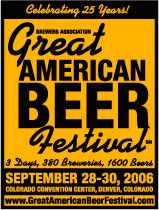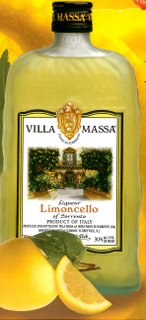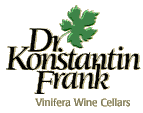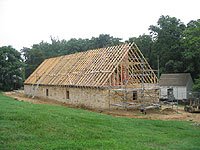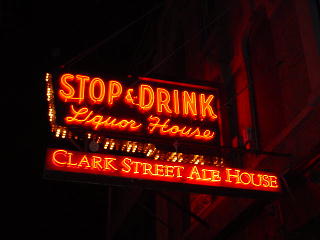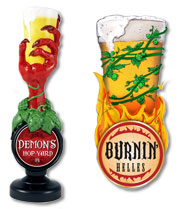
Is it just me or did someone wake up the giant?
Not to long ago the folks at
Anheuser-Busch in St. Louis were reporting something quite unusual: A-B sales were down 1.8 percent last year. This came not long after mergers formed
InBev and
SABMiller to put a serious challenge to A-B's place as the world's largest brewing concern. I guess you should not tug on Superman's cape and you certainly should not spit into the wind.
Let's review what the folks at A-B have announced recently:
1. They acquired the
Rolling Rock brand for $82 million and moved production to A-B's Newark brewery.
2. They became the U.S. importer for Singapore's
Tiger Beer.
3. They became the U.S. importer for
Grolsch from the Netherlands.
4. They launched two organic beers:
Wild Hop Lager under the Green Valley Brewing name and
Stone Mill Pale Ale under the Crooked Creek Brewing name.(You won't find a mention of A-B on any of the packaging for these two brands.)
5.
Widmer Bros. Brewing, which A-B holds a minority interest, acquired a minority interest in
Goose Island Brewing. A-B distributors in the key Chicago market now have distribution rights to Goose Island's popular beers. This is similar to A-B's holdings and distribution agreement with
Redhook Ale Brewery.
6. Under the A-B Specialty Brewing Group, the company ran consumer balloting in Ohio and New England to pick two "hometown" brews and launched
Demon's Hop Yard IPA (brewed in Merrimack, N.H.) and
Burnin' Helles (brewed in Columbus, Ohio).
7. They announced they were selling beer in Trinidad and Tobago.
8. They signed an agreement to distribute
Hansen Energy Drinks.
9. Last holiday season they rolled out
Brew Masters Private Reserve (8.5 percent ABV) and
Celebrate (10 percent ABV).
10. They launched a seasonal line of beers with
Jack's Pumpkin Spice Ale in the Fall,
Winter's Bourbon Cask Ale and
Beach Bum Blonde Ale for the Summer.
11. They announced they were serving
Front Range Fresh Hop Harvest Ale exclusively at tour centers at their breweries in St. Louis, Mo., Jacksonville, Fla., Fort Collins, Colo., and Fairfield, Calif.
12. They rolled out some serious line extensions during the last two years with
Budweiser Select,
Michelob Ultra Amber,
Natty Up,
ZiegenBock Amber and new flavors for
Bacardi Silver.
13. They introduced
Tilt, a berry-flavor malt beverage with caffeine, guarana and ginseng, and
Spykes as two other forays into the adult alternative beverage category following the
BE launch off the Budweiser franchise.
14.
Michelob Marzen and
Michelob Pale Ale both took home Gold Medals at the
Great American Beer Festival last Fall. These brands are available as part of a Michelob sampler pack that includes standard
Michelob,
Michelob Honey Lager and
Michelob Amberbock.
15.
Warren Buffet's Berkshire Hathaway purchased 43.9 million shares of the company last year -- 5.7 percent of the outstanding A-B stock. Buffet is pretty good at picking winners.
16. The company is selling 16 percent of its total volume outside the United States, thanks in part to brewing agreements in key markets around the globe. In some cases, it does not matter if they are selling A-B brands because A-B owns a 50 percent share of Mexico's
Groupo Modelo (they have a little brand called
Corona), 27 percent of China's
Tsingtao and two years ago they acquired China's fourth largest brewer,
Harbin. They now import
Harbin Lager to the U.S., plus they brew
Kirin Ichiban and
Kirin Light in the U.S. for the Japanese brewer.
17. They announced they had secured exclusive television sponsorship rights to the NFL Super Bowl through the 2012 season, to go along with being the official beer of the 2008 Olympics, the FIFA World Cups in 2010 and 2014, Major League Baseball, National Basketball Association and NASCAR's Busch Series.
18. They are even heading into the spirits business to try to recapture former beer drinkers with a product called
Jekyll & Hyde -- actually two products: a berry flavored liquor (60 proof) and an herbal liqueur (80 proff) that are sold together and designed to be mixed by the consumer.
I'm sure I've missed a few things they have done, but the list is pretty darn impressive as it stands. A-B's stock is up around 10 percent so far for the year and the company announced second quarter earnings shot up 7.4 percent to $638 million. During this time period the company broke its record for sales to retailers. A-B, which has had a long stated goal of controlling 50 percent of the U.S. beer market, estimates that it owns a 48.9 percent market share.
Could someone turn down the lights and let the giant rest for a little bit?
